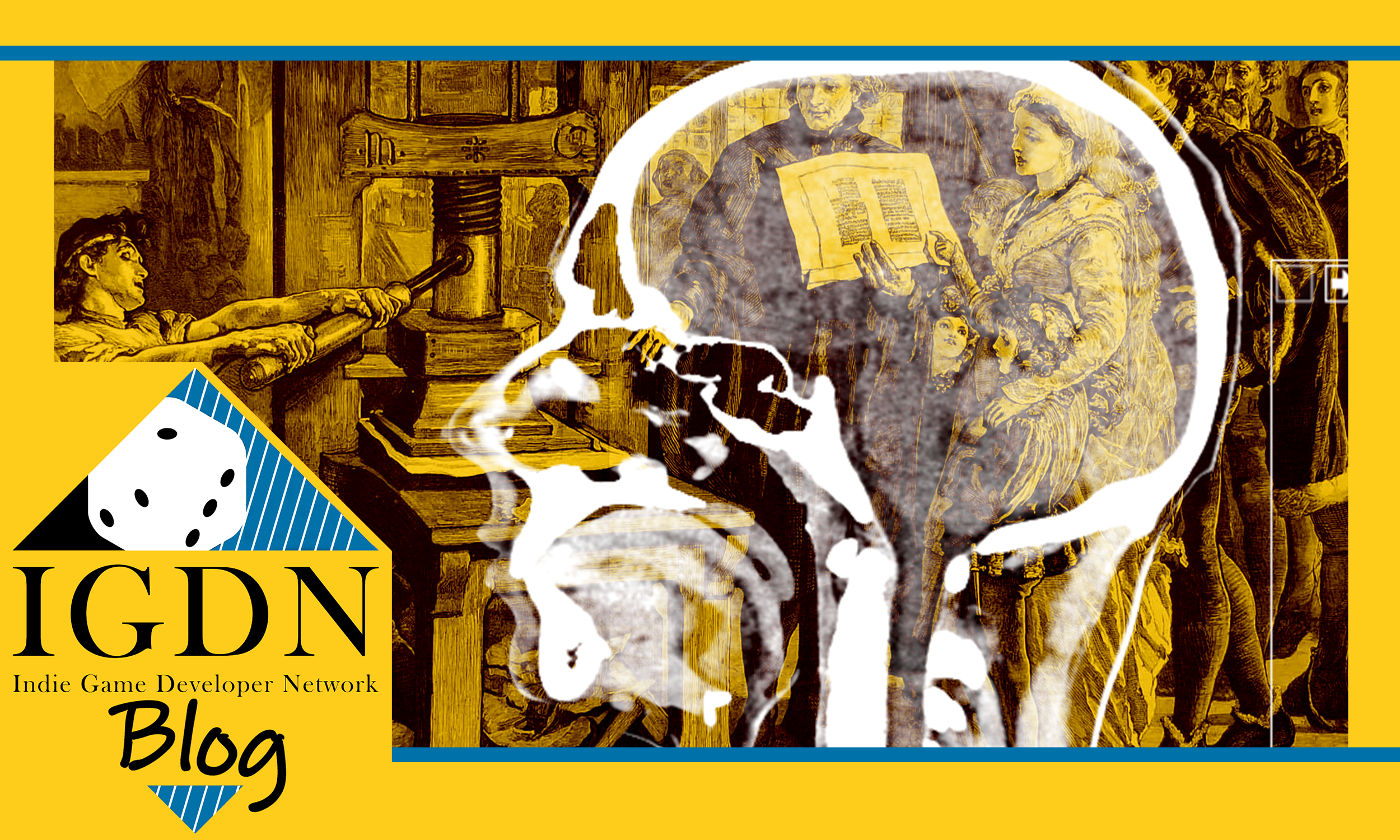Publishing Normal
Publishing Normal
Understanding the Baseline in TTRPG Publishing
By James Kerr of Radio James Games
In an effort to arm those new to TTRPG publishing, I wanted to write down the benchmarks I use to measure time and expectations in what is a “normal” schedule for indie TTRPG publishing, or at least the part of it I know a little about.
For a bit of context, as my day job I work in the traditional publishing space: in trade magazines. And I’ve got a whole bag of tricks for making things quicker and easier. I had the privilege, and I do mean privilege in all that entails, of learning publishing in a stable business environment, not with my creative baby on the line and a family to feed. With that safety I’ve published 8 TTRPG books in the last 4 years and all of them are carried by distributors and sold in FLGSs.
Most folks who venture forth into the TTRPG publishing space don’t have that. I think the biggest knowledge deficiency this creates is just not knowing how much time you can expect a game to take. How many Kickstarters have you seen with wild underestimations of delivery times? (Don’t go looking at my last Kickstarter, it’ll undermine my credibility.)
People are shy about hard numbers, but it’s hard to set expectations without them. Where do I get the gall to make these claims? Well, actually, I’m pretty nervous about sharing, but I’m willing to embarrass myself a little if it’ll help folks to get started. If you know a thing or two and disagree with me, I invite you to submit your own numbers in the comments.
Daily Output
Okay, you’ve finally gotten some free time to work on your TTRPG. How much productivity should you expect from yourself?
Writing: The old newspaper adage is that writers need to produce 800 finished words a day. Don’t make a timetable where you expect to produce more than a mid-century seasoned reporter.
Illustration: Artists usually take 2 to 4 hours to make every piece for your TTRPG, not including the time to brainstorm worthwhile ideas. Also, even experienced artists will undervalue themselves and underestimate the time commitment necessary. Be patient with artists and pay proportionally to not just the quality of their piece but the time they put into your TTRPG.
Layout: Layout takes about half an hour a page, on average. Some pages like the Parent/Master pages might take longer, but others will whizz by.
Step by Step TTRPG Publishing
As it was taught to me, publishing is done in the following steps. There’s some overlap (sometimes it can feel like putting up a circus tent), but generally it’s one thing after another.
Rules: Develop the rules on a few quick and dirty reference sheets without layout. They should not be fully complete—they should have their core elements set, but still be loose enough that you’ve kept an open mind about the project changing.
Playtest: Get it to the table as fast as possible. Then playtest the stuffing out of it. If you polish the rules too early, then you’re not open to the innovative feedback that can come from playtesting. Make sure you’re not being precious. Anything that makes for a better game is best. Many great ideas fall apart at this stage. That’s fine—shelve the idea for now and try another.
Start the Editorial Funnel. Just to get this far you’ve probably already written a lot of random junk. Assemble it into logical thought order, and make a readable draft. When a writer feels lost, they write more and more and more. Stop that. Get the bones of it down and get it to Content Editing so they can make a pass before you tighten it into a complete draft.
Art Commissions: Does this seem early? Yes! Art takes a long time. I know the editorial isn’t entirely done, but you don’t have much of a choice, especially if you’re crowdfunding and will need to commission assets for the crowdfunding page. Also you need the cover now. The cover is maybe the most important thing about the game. You’re only as good as your cover.
Master/Parent Pages: Editorial might not be done yet but you should know roughly what the book is going to look like. Your Art Director and Layout Artist (even if that’s all just you) should start cobbling together three or four Master/Parent layouts that will inform the look of the whole book. Typically you want a layout for a chapter section, for a header page, and at least one average text page. This means deciding on fonts and styles. All this will inform your words per page. (Did you just figure out you’ve got 180 pages of lore for your 150 page book?) If you do this any later you’ll regret it.
Editorial Revisions and Print Details: Never, never, never start Layout until Editorial is entirely finished. Never. Sure, there’s going to be some necessary modifications, but it should go through the entire writing cycle before the Layout Artist ever sees it. If you do send premature editorial to Layout it will cost you in time. Painfully. Finish the damn thing as text. Revisit your book size and cost projections, then firm up your MSRP as best you can. This may necessitate changes in your Master/Parent layouts. These things are harder to adjust the later on you get, so commit now.
Layout: This should be a downhill fall. Remember that if you are struggling between your sacred polished words and the look of the page, always favour the look. (I can hear the gasps.) Strike a redundant sentence here or there as necessary to make the page work. If the art isn’t in yet for the section that’s being laid out, insert a placeholder box and keep going.
Printers: As layout is nearing its end, once again figure out all that cost-ratio stuff. You should be far enough along to have a projected weight and spine width. Start talking with your printers. You probably should have already. But now at least you can really tell them stuff.
Looking Complete: Generate a proof of the entire thing once all sections are laid out, and give it a good, honest read. Then, yes, proofing has to happen again. Everyone you know should be copy editing for typos. Now you get the joy of adding in your ISBN and Masthead information.
Marketing & Public Presentation: Once you have those initial art assets back from the Artist you can start building up a marketing campaign, especially if you’re crowdfunding. I would never launch a crowdfunding campaign before the editorial is done. Layout? Sure. Editorial? Never. You’ll waste time (and stress!) adjusting everything after the fact.
Time-Table
Your Kickstarter backers, your partner, and your friends who are sick of hearing about it are all asking the seemingly reasonable question: how much longer is this going to take? We’re going to assume everyone’s working part-time and that the TTRPG is:
About 60,000-70,000 words
200-250-ish pages
50 pieces of art + Cover
I’m taking these expectations from my own track record in TTRPGs, a blog article I wrote earlier this year here, my peers, and the dozen or so freelancers I've contracted in the past, but they’re all influenced by my magazine experience.
Rules Development: 1 month to a year. Highly variable. (It’s a bad industry for that.)
Writing: Let's say 2 months at most. If you’re taking longer than that then you’re not sure what you’re writing or you’ve hit a snag, which sometimes happens.
Editing: 2 months turnaround should be cushy. But remember that editing is not a one-time thing. The Content Editing cycle can really muss up your timeline if heavy revisions are necessary. Top Editing shouldn’t be a big deal if the writing is good, and no matter what, Proofing is still a necessary and separate practice from Editing.
Proofing: 1 month is fine.
Art: 4 months, but pad it a little because artists always under-estimate how long they’ll take.
Layout: Let's say 2 months. Page Masters/Parents should be done before there's any finished editorial or art in.
With a few people working in tandem, you can get a solid book out in a quarter, but if you’re a publishing house of one, obviously it’s going to take a lot longer.
Conclusion
Temper your expectations to reasonable benchmarks. Be kind to yourself: delays are just delays and it’s better late than lousy. But also know when to move on. Following a strict publishing schedule helps with that, because it’s publish or perish out there. Good luck!
This IGDN blog article is brought to you by James Kerr of Radio James Games. If you want to get in touch with the contributor he can be reached at info@radiojamesgames.com or visit their website at www.radiojamesgames.com.
This article is part of the Indie Game Developer Network's blog series. The opinions and views expressed in this article are those of the author and do not necessarily reflect the opinions and views of the IGDN or its members.

